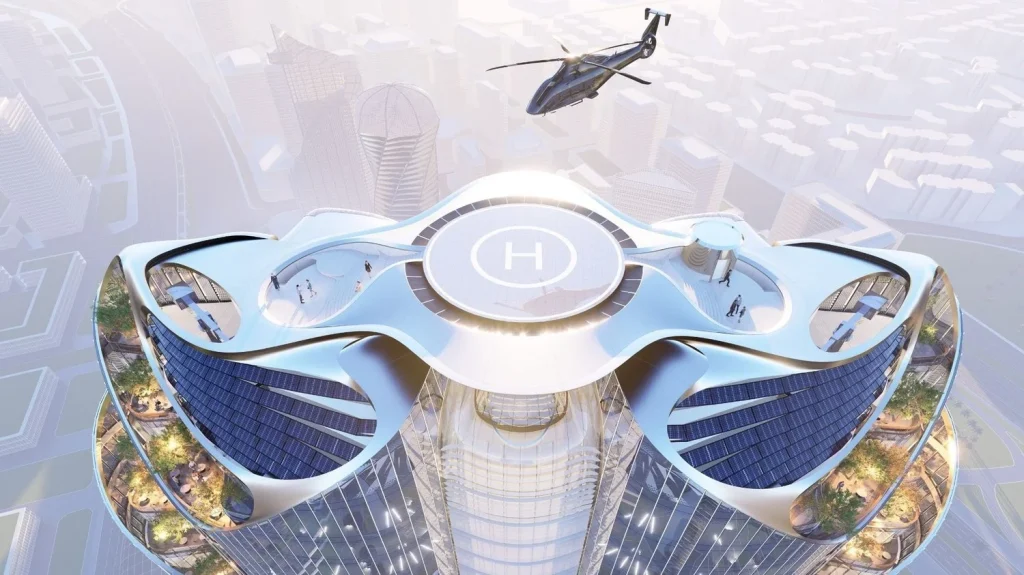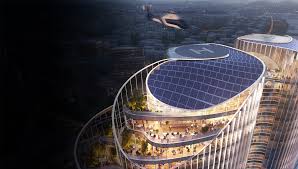The United Nations Climate Change Conference (COP29) will take place in Belize in 2024– we are working tooth and nail to deal with Global warming and its catastrophic aftercare. Experts are telling us that the globe is 1.5 degrees Celsius above what is the advisable threshold temperature. That is scary, but seeing genius designs made to alleviate this is somewhat soothing. Like the sighting of a land amid a tempest.
Egypt’s ambitious “New Administrative Capital” is rising east of Cairo, drawing attention for its futuristic designs and groundbreaking ideas. Among the boldest concepts is the Forbes International Tower—a skyscraper set to be powered by hydrogen. At 240 meters (787 feet) tall, this office building will stand alongside Africa’s tallest structure, the Iconic Tower. Designed by the renowned Adrian Smith + Gordon Gill Architecture, the firm behind New York’s Central Park Tower and Saudi Arabia’s Jeddah Tower, this project promises to be a model of sustainability.

Developer Magnom Properties plans for the tower to achieve a net-zero carbon footprint, relying on a mix of 75% hydrogen and 25% solar energy, eliminating the need for traditional grid power. In addition to its innovative energy approach, the building will use “low-embodied carbon” materials, reducing construction emissions by an impressive 58%. Onsite water recycling will also help conserve precious freshwater, a vital feature in Egypt’s increasingly water-scarce environment.
Magnom’s goal is to make the tower net-negative in carbon emissions—removing more carbon than it emits—over its lifecycle, and it aims to become the first skyscraper in the world to earn a Zero Carbon Certificate from the International Living Future Institute. This move marks a significant step forward in the global push for net-zero architecture, following other notable projects like Beijing’s Z6 Tower and the upcoming Curzon Wharf in Birmingham, England.

Partnering with Schneider Electric and H2 Enterprises, Magnom is exploring the use of liquid organic hydrogen carriers (LOHC), which safely transport hydrogen through existing infrastructure before it is used to generate electricity. Though this hydrogen solution is still being tested, it offers a promising way to reduce emissions and transform the way buildings are powered.
As construction continues, the New Administrative Capital’s central business district is rapidly becoming a hub for international business, setting the stage for Egypt’s next chapter as a leader in sustainable urban development. With more key buildings already completed, the city, which began construction in 2016, is expected to be fully operational within a few years, creating a smart, green alternative to Cairo’s overcrowded urban sprawl.
If projects like the Forbes International Tower succeed, they could transform urban development by reducing emissions through hydrogen and solar energy. As more such buildings emerge worldwide, we can make significant strides in combating global warming and set a powerful example of sustainable innovation in architecture. With a few more projects like this, we could help turn the tide on climate change.
What do you think? If projects like the Forbes International Tower succeed, they could transform urban development by reducing emissions through hydrogen and solar energy. As more such buildings emerge worldwide, we can make significant strides in combating global warming and set a powerful example of sustainable innovation in architecture. With a few more projects like this, we could help turn the tide on climate change.
What do you think?


















+ There are no comments
Add yours